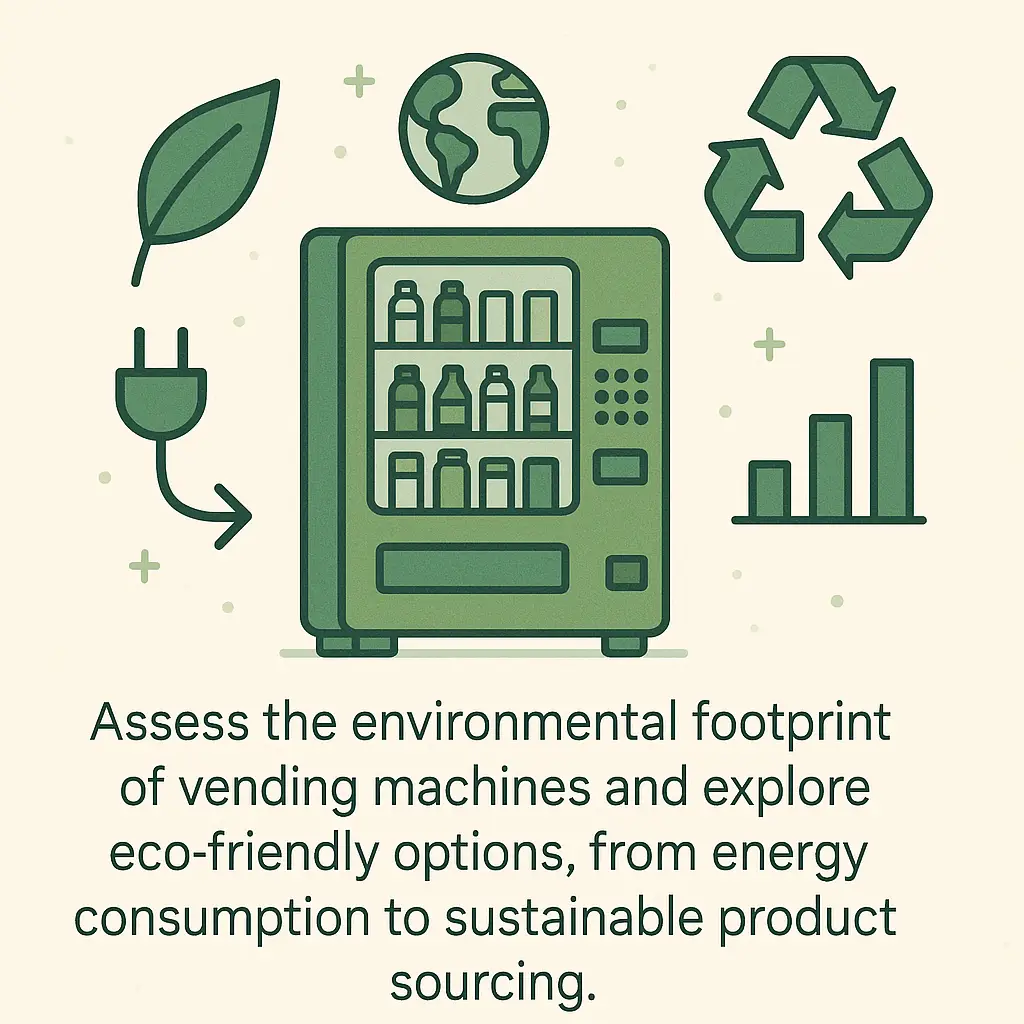Environmental Impact of Vending Machines
Assess the environmental footprint of vending machines and explore eco-friendly options, from energy consumption to sustainable product sourcing.
Back to Vending Info for Businesses ResourcesAssess the environmental footprint of vending machines and explore eco-friendly options, from energy consumption to sustainable product sourcing.
Back to Vending Info for Businesses ResourcesModern vending machines are increasingly designed with sustainability in mind, offering a path to convenience that aligns with environmental consciousness.
![]() Energy-efficient models reduce power consumption significantly
Energy-efficient models reduce power consumption significantly
![]() Sustainable product sourcing minimizes environmental harm
Sustainable product sourcing minimizes environmental harm
![]() Recycling initiatives help mitigate packaging waste
Recycling initiatives help mitigate packaging waste

The environmental impact of vending machines is a growing consideration for businesses aiming to operate more sustainably. While offering convenient access to refreshments, traditional vending models have often been associated with significant energy consumption, waste generation, and the use of potentially harmful refrigerants. However, the industry is rapidly evolving, with a strong shift towards eco-friendly vending solutions that minimize their ecological footprint.
One of the most noticeable environmental impacts comes from the electricity required to power vending machines, particularly for cooling refrigerated products. Older models can be notorious energy hogs, but modern machines have dramatically improved. Many new units are Energy Star certified vending machines, incorporating advanced insulation, LED lighting, and more efficient cooling systems. These innovations significantly reduce power usage, leading to lower operating costs and a smaller carbon footprint. Businesses looking to upgrade or install new machines should prioritize these energy-efficient models.
Another area of concern is the type of refrigerants used. Historically, some cooling systems contained hydrofluorocarbons (HFCs), which are potent greenhouse gases. The industry has made strides to transition to more environmentally benign refrigerants like natural CO2 or propane, which have a much lower global warming potential (GWP). Understanding the type of refrigerants in a machine is crucial for assessing its overall environmental performance, especially when considering the carbon footprint of vending machines.
Vending machines generate waste primarily through product packaging. Single-use plastics, cans, and wrappers contribute to landfill waste if not properly managed. To combat this, businesses and vending operators can implement strategies to reduce waste, such as stocking products with sustainable packaging in vending, offering reusable bottle refill options, and placing recycling bins prominently next to machines. Many companies are also focused on the end-of-life recycling of the machines themselves, promoting a circular economy approach.
Beyond the machine itself, the environmental impact extends to the products it dispenses. Choosing products that are ethically sourced, locally produced, or have sustainable certifications can further reduce the overall footprint. This includes options with organic ingredients, fair-trade certifications, or those from companies committed to environmental stewardship. By making conscious choices about product selection, businesses can align their vending offerings with broader sustainability goals.
The primary impacts include energy consumption for cooling/heating, manufacturing of components, waste generation from packaging, and refrigerants used in older models.
Modern vending machines, especially Energy Star certified models, use significantly less energy than older units through improved insulation, LED lighting, and efficient cooling systems.
Historically, some vending machines used refrigerants with high global warming potential (GWP). Newer machines increasingly use eco-friendly refrigerants with lower GWP.
By stocking products with sustainable or recyclable packaging, implementing recycling bins near machines, and potentially offering reusable container options.
Yes, many manufacturers now offer eco-friendly models that are Energy Star certified, use natural refrigerants, and are built with recycled or recyclable materials.
Life cycle assessment evaluates the environmental impact of a vending machine from raw material extraction, manufacturing, transport, operation, and end-of-life disposal or recycling.
Yes, by designing machines for durability, using repairable components, encouraging product recycling, and exploring options for refurbishment and remanufacturing.
Choosing products from local suppliers, those with sustainable farming practices, or those with eco-friendly packaging can significantly reduce the overall environmental impact.
Incentives can include reduced operating costs through energy efficiency, enhanced corporate social responsibility (CSR) image, and compliance with green building certifications.
Look for Energy Star certification, which indicates that the machine meets strict energy efficiency guidelines set by the EPA. Vendors can also provide detailed energy consumption data.